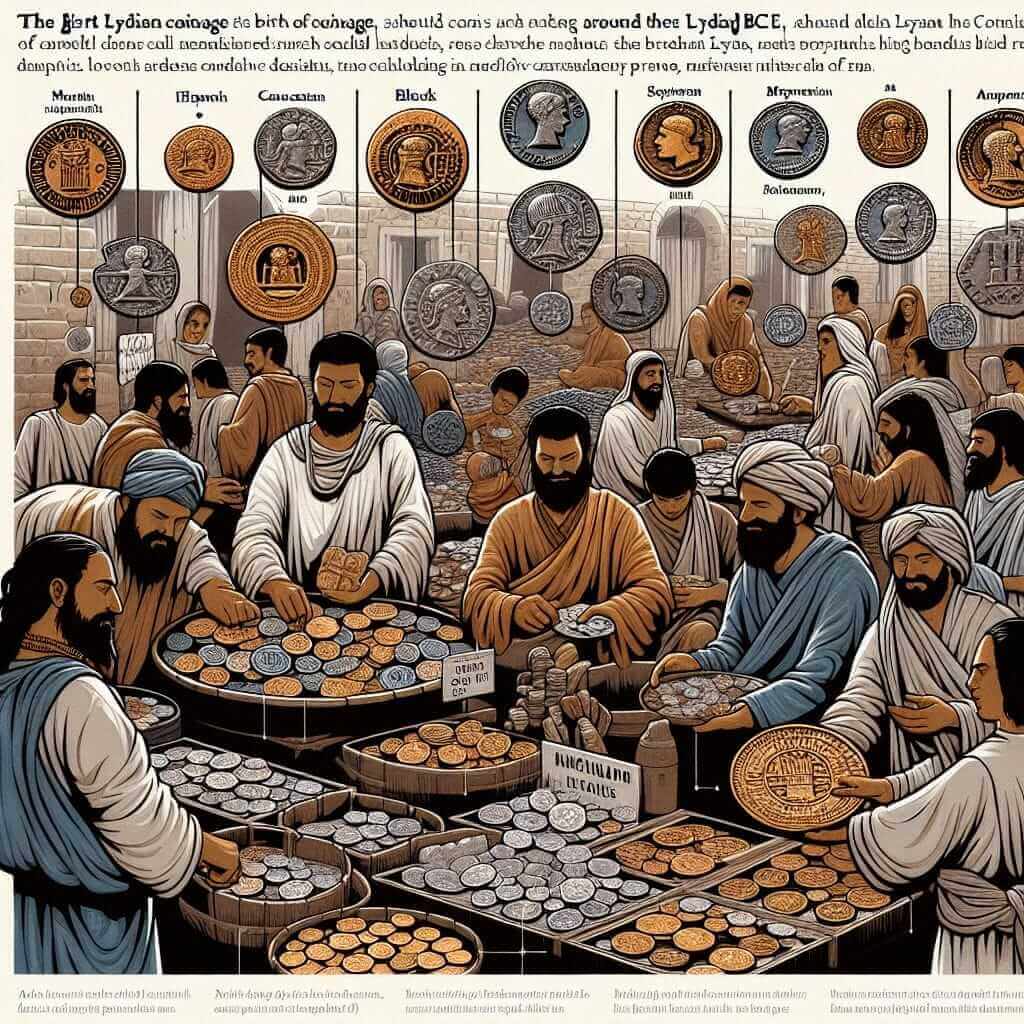The Reading section of the IELTS exam can be a challenging part for many test-takers. This section assesses your ability to comprehend and interpret complex texts. One of the interesting and frequently appearing topics in IELTS Reading passages is “Historical Analysis of Ancient Economies”. By practicing passages related to this topic, you can enhance your reading skills and increase your chances of scoring high on the IELTS Reading test.
Historical Analysis of Ancient Economies: Reading Practice
Passage
In ancient times, economies were largely based on barter systems, where goods and services were exchanged directly without using money. Each ancient civilization had its unique economic system, which was influenced by geography, resources, and cultural practices. For instance, the Mesopotamian economy thrived due to its fertile land and proximity to major waterways which facilitated trade. The Ancient Egyptian economy was bolstered by the Nile River, which provided a means for transportation and irrigation, ensuring abundant agricultural yields.
Trade networks were not limited to local markets but often extended beyond regional borders. Ancient Rome, for example, developed an extensive trade network that spanned across Europe, Asia, and North Africa. Roman roads and sea routes played a crucial role in the efficient movement of goods such as grain, wine, and olive oil.
Coinage also emerged as a significant development in ancient economies. The Lydians, credited with creating the first coins around 600 BCE, revolutionized trade by providing a standardized medium of exchange. This innovation simplified transactions and paved the way for more complex economic systems.
Ancient economies were also characterized by the prominence of certain industries. The textile industry in Ancient China, particularly the production of silk, was highly advanced and became a cornerstone of their economic strength. Similarly, the mining and metallurgy industries were vital for the economies of Ancient Greece and Rome.
Another critical aspect of ancient economies was their reliance on labor, including both free labor and slave labor. The usage of slaves was especially prevalent in ancient Greece and Rome, where slaves were integral to various sectors, including agriculture, mining, and domestic work.
The decline and collapse of ancient economies were often due to a combination of internal and external factors. For example, the decline of the Roman economy was attributed to political instability, over-reliance on slave labor, and external invasions.
Questions
Multiple Choice
-
What was the main factor that contributed to the Mesopotamian economy?
- A) Coinage
- B) Fertile land and major waterways
- C) Extensive trade networks
- D) Slave labor
-
Which ancient civilization is credited with creating the first coins?
- A) Romans
- B) Egyptians
- C) Lydians
- D) Greeks
-
The Ancient Chinese economy was primarily bolstered by which industry?
- A) Mining
- B) Textiles
- C) Agriculture
- D) Metallurgy
True/False/Not Given
-
The Nile River was crucial to the Ancient Egyptian economy.
- True
- False
- Not Given
-
Ancient Rome developed trade networks only within Europe.
- True
- False
- Not Given
-
The decline of the Roman economy was partially due to political instability.
- True
- False
- Not Given
Matching Information
-
Match the following civilizations with their economic characteristics:
- A) Mesopotamia
- B) Ancient Egypt
- C) Ancient China
- D) Roman Empire
i. Had extensive trade networks.
ii. Relied heavily on the Nile River.
iii. Advanced textile industry.
iv. Developed the first coins.
Answers
- B – The fertile land and major waterways were significant for the Mesopotamian economy.
- C – The Lydians are credited with creating the first coins.
- B – The textile industry, specifically silk production, was a major economic strength of Ancient China.
- True – The Nile River was crucial to the Ancient Egyptian economy.
- False – Ancient Rome’s trade networks spanned across Europe, Asia, and North Africa.
- True – The decline of the Roman economy was partly due to political instability.
-
- A (iv) – Mesopotamia developed the first coins.
- B (ii) – The Ancient Egyptian economy relied heavily on the Nile River.
- C (iii) – The Ancient Chinese economy had an advanced textile industry.
- D (i) – The Roman Empire had extensive trade networks.
Lesson
Common mistakes to avoid when answering these types of questions:
- Guessing without reading: Ensure you read the passage thoroughly before making any assumptions.
- Misidentifying keywords: Focus on the specific information provided in the text, rather than relying on prior knowledge or assumptions.
- Overlooking details: Each detail in the passage is crucial for answering questions correctly. Pay attention to every part of the passage.
Vocabulary
Here are some challenging words from the passage:
- Barter (verb) /ˈbɑːrtər/ – To trade by exchanging goods or services without using money.
- Coinage (noun) /ˈkɔɪnɪdʒ/ – The system or act of minting coins.
- Metallurgy (noun) /ˈmetəlɜːrdʒi/ – The science and technology of metals.
Grammar Focus
Past Tense Usage
- Be aware of different ways past events are described to show chronological sequences or causality.
- For example, “The Lydians, credited with creating the first coins around 600 BCE, revolutionized trade.”
Tips for IELTS Reading Practice
- Regular Practice: Consistent practice will help improve your reading comprehension skills.
- Time Management: Practice completing passages within the given time limit to enhance your time management skills.
- Diverse Topics: Read a variety of texts across different subjects to familiarize yourself with different vocabularies and writing styles.
- Analyze Mistakes: Review your errors thoroughly to understand where and why you went wrong.
With diligent practice and a clear understanding of the kinds of questions asked, you can master the Reading section of the IELTS exam.

By focusing on historical topics such as the “Historical Analysis of Ancient Economies,” you can enhance your comprehension skills and perform well in the IELTS Reading section. Happy studying!